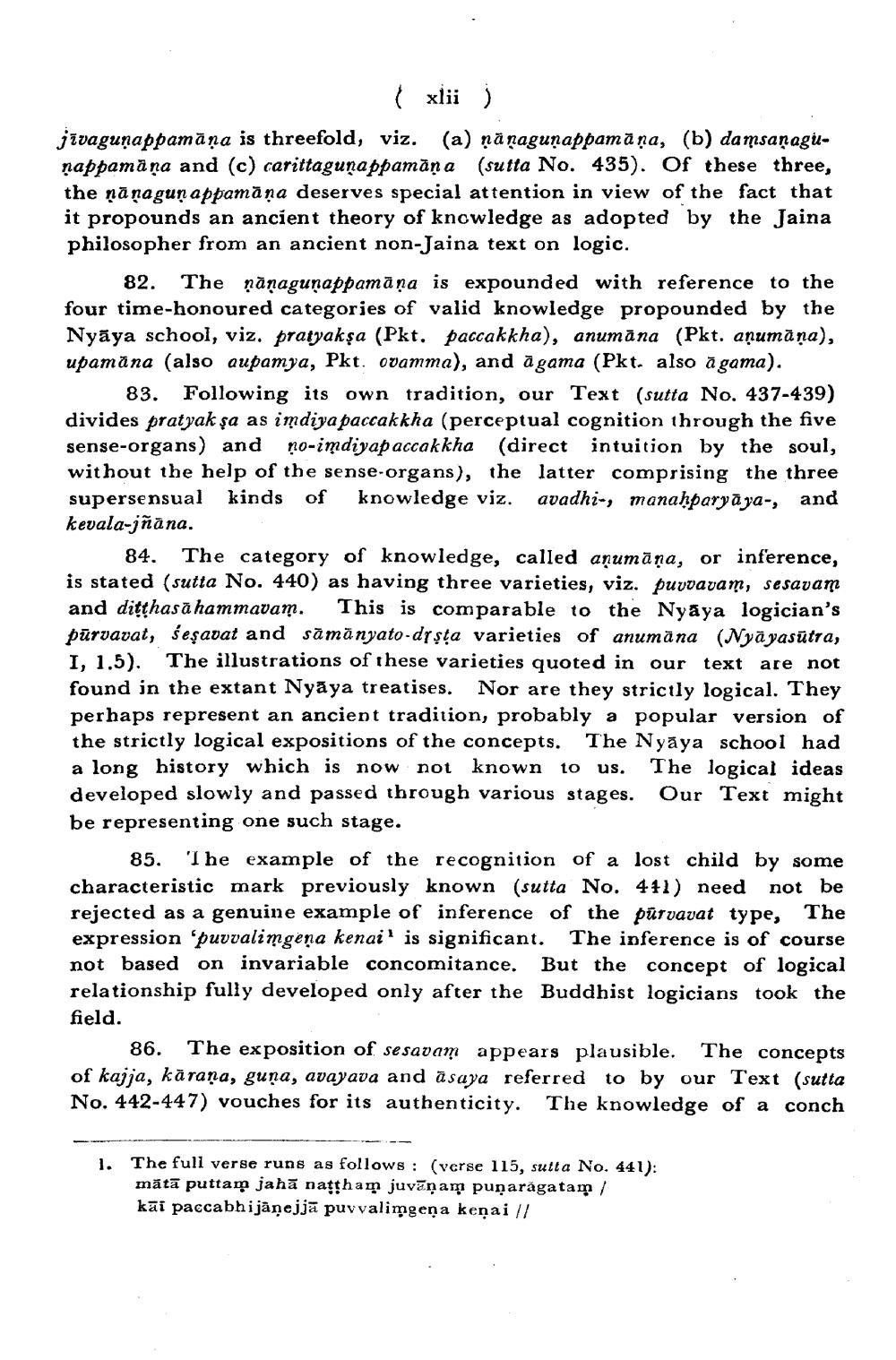________________
(
xlii)
jīvagunappamāna is threefold, viz. (a) nå nagunappamāņa, (b) damsanaginappamāṇa and (c) carittagunappamāna (sutta No. 435). Of these three, the ņā nagun appamāņa deserves special attention in view of the fact that it propounds an ancient theory of knowledge as adopted by the Jaina philosopher from an ancient non-Jaina text on logic.
82. The nanagunappamāņa is expounded with reference to the four time-honoured categories of valid knowledge propounded by the Nyāya school, viz. pratyaksa (Pkt, paccakkha), anumāna (Pkt. anumāna), upamāna (also aupamya, Pkt. ovamma), and a gama (Pkt. also ā gama).
83. Following its own tradition, our Text (sutta No. 437-439) divides pratyak şa as imdiya paccakkha (perceptual cognition through the five sense-organs) and no-imdiyapaccakkha (direct intuition by the soul, without the help of the sense-organs), the latter comprising the three supersensual kinds of knowledge viz. avadhi-, manahparyaya-, and kevala-jñana.
84. The category of knowledge, called anumāņa, or inference, is stated (sutta No. 440) as having three varieties, viz. purvavam, sesavam and ditthasa hammavam. This is comparable to the Nyaya logician's pūrvavat, śeşavat and sämänyato-drsta varieties of anumāna (Nyayasūtra, I, 1.5). The illustrations of these varieties quoted in our text are not found in the extant Nyāya treatises. Nor are they strictly logical. They perhaps represent an ancient tradition, probably a popular version of the strictly logical expositions of the concepts. The Nyāya school had a long history which is now not known to us. The logical ideas developed slowly and passed through various stages. Our Text might be representing one such stage.
85. 'I he example of the recognition of a lost child by some characteristic mark previously known (sutta No. 411) need not be rejected as a genuine example of inference of the pūrvavat type, The expression 'puvvalimgeņa kenai' is significant. The inference is of course not based on invariable concomitance. But the concept of logical relationship fully developed only after the Buddhist logicians took the field.
86. The exposition of sesavam appears plausible. The concepts of kajja, käraņa, guna, avayava and āsaya referred to by our Text (sutta No. 442-447) vouches for its authenticity. The knowledge of a conch
1. The full verse runs as follows: (verse 115, sutta No. 441):
mätā puttam jahā nattham juvānam punaragatam / kai paccabhijāņejjā puvvalimgeņa kenai //




